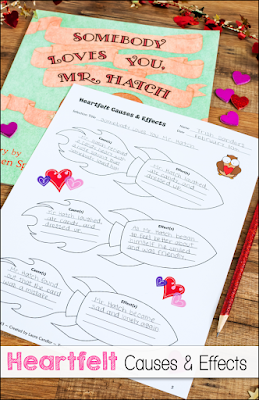 Integrating Social Studies and Literacy
Integrating Social Studies and Literacy
Presidents Day is celebrated in February, so it's the perfect time to have your students write President Bio Poems! This lesson is also a great way to sneak a little research and creative writing into your social studies curriculum!
Bio Poems Made Easy is a free teaching resource that I created several years ago to teach students how to write bio poems about themselves, and it can easily be adapted and used in many different content areas. This freebie includes complete directions for the basic poetry writing assignment, as well as two graphic organizers for brainstorming and planning. For this activity, I created a special
President Bio Poem graphic organizer with the specific categories needed for this assignment.
Tip: It's best to have your students write bio poems about themselves prior to the
President Bio Poems lesson so they will be familiar with the bio poem format.
President Bio Poems
Before this lesson, download and print one copy of the free
President Bio Poem graphic organizer for each student, and write the names of well-known presidents on slips of paper.
To start the lesson, ask each student to draw out the name of a president and write that name on the line at the top of the graphic organizer. Follow the suggested lesson plan described in
Bio Poems Made Easy, but tell your students they will be writing bio poems about their presidents instead of about themselves. They will start by filling out the boxes on the graphic organizer using information they learn through research. This task involves quite a bit of higher level thinking, because students not only have to gather information, they have to analyze what they've learned to decide where to write their facts. Specifically, they will be searching for information in these categories:
- Adjectives that Describe the President
- Who lived... (where? when? details about childhood)
- Who said.... (famous quote)
- Who cared about....
- Who was determined to....
- Who refused to....
- Who made a difference by . . .
- Who is remembered for....
President Bio Poems - Lesson Variations
Completing the graphic organizer might be a bit of a challenge for some kids, so you may want to let your students work in partners. They can each conduct their own research and then collaborate to complete the form and write the poem. After students complete their poems, they can also create "word clouds" to display with their poetry. Be sure to allow time for students to share with the class!
Presidents Day Spelling Trivia
By the way, did you know that
Presidents Day is not the official name of the holiday? It's actually
George Washington's Birthday! Over time, the public began to refer to the holiday as one that honored all the presidents which has caused confusion about its correct spelling. Many refer to it as
Presidents Day (without an apostrophe), but others insist that the plural possessive form,
Presidents' Day, is the correct way to spell it because it refers to more than one president. But does it? If the holiday officially honors George Washington, maybe it should be the singular possessive form,
President's Day! How do YOU spell this holiday? The good news is that whatever spelling you use, no one can say that you're wrong!




















